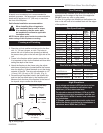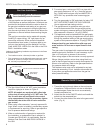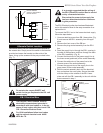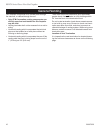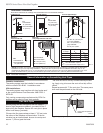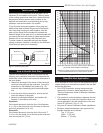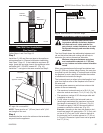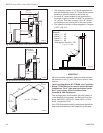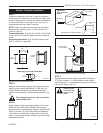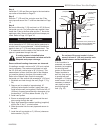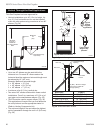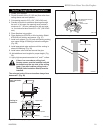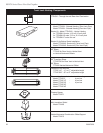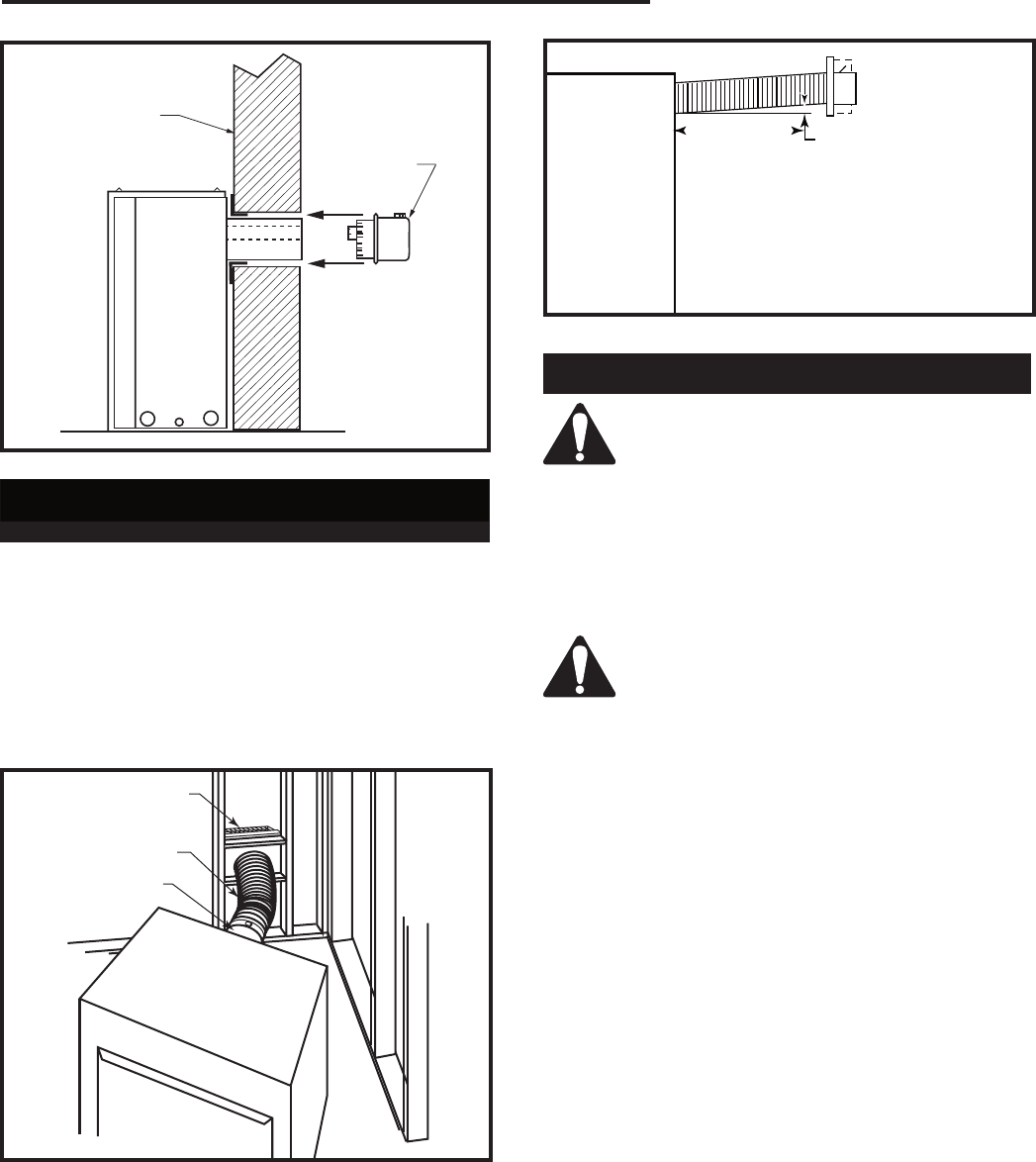
15
RDVN Series Direct Vent Gas Fireplace
20007628
FP1005
Side View Vent Termination
1/25/00 djt
Finished
Wall
Vent
Termination
Fig. 17 Side view of final unit location.
FP1005
Rear Wall Vent Installation -
Flex Vent Pipe
Follow Steps 1 and 2 on Page 13.
Step 3
Install the 4” (102 mm) flex vent pipe to the appliance
collars described in “General Information Assembling
Vent Pipes”, Page 12. If the installation requires a 45°
angle, grasp the vent pipe close to the appliance collar
and bend to 45°. DO NOT exceed 45°. (Fig. 18)
Install the 7” vent pipe in the same manner as Step 2.
FP1473
corner flex install
4/04 djt
Termination
Flex Section
Appliance Collars
FP1473
Fig. 18 Grasp the vent pipe close to the collar and bend to
45° angle. Do not exceed 45°.
NOTE: There must be a 1” (25 mm) rise in a 24” (610
mm) length of flex vent.
Step 4
Assemble the flex vent to the collars on the termination
as you did on the appliance.
Since it is very important that the vent-
ing system maintain its balance between
the combustion air intake and the flue
gas exhaust, certain limitations as to vent
configurations apply and must be strictly
adhered to.
The Vent Graph shows the relationship between verti
-
cal and horizontal side wall venting and will help to
determine the various dimensions allowable.
Minimum clearance between vent pipes
and combustible materials is 1”(25 mm)
on top, bottom and sides unless otherwise
noted.
When vent termination exits through foundations less
than 20” (508 mm ) below siding outcrop, the vent pipe
must flush up with the siding. It is always best to locate
the fireplace in such a way that minimizes the number
of offsets and horizontal vent length.
The horizontal vent run refers to the total length of vent
pipe from the flue collar of the fireplace to the face of
the outer wall.
Horizontal plane means no vertical rise exists on this
portion of the vent assembly.
• The maximum horizontal vent run is 20 ft. (6.1 m)
when the vertical vent rise is 7¹⁄₂ ft. (2.3 m). (Fig. 20)
• The maximum number of 90° elbows per side wall
installation is three (3).
• If a 90° elbow is used in the horizontal vent run
(level height maintained) the maximum horizontal
vent length is reduced by 36” (914 mm). (Fig. 21)
This does not apply if the 90° elbows are used to
increase or redirect a vertical rise. (Fig. 22)
Example: According to the chart the maximum hori-
zontal vent length in a system with a 7.5’ (2.3 m) verti-
cal rise is 20’ (6 m) and if a 90° elbow is required in
the horizontal vent it must be reduced to 17’ (5.2 m).
In Figure 21 Dimension A plus B must not be greater
than 17’ (5.2 m).
Vertical Sidewall Applications
1" (25mm)
24" (610mm)
FP1472
rise in length
4/04 djt
FP1472
Fig. 19 There must be a 1” rise in 24” length.
(Minimum 1” (25mm) rise)



